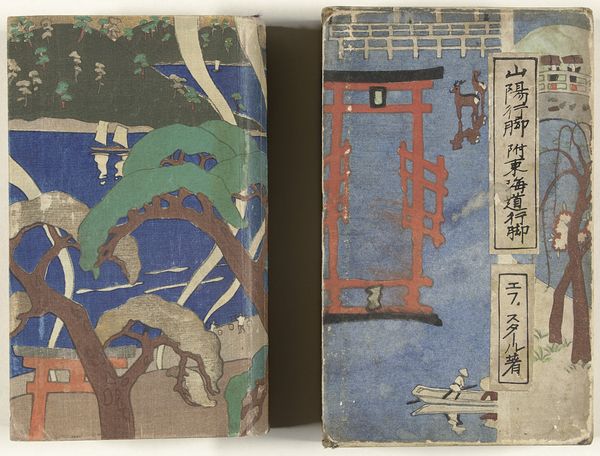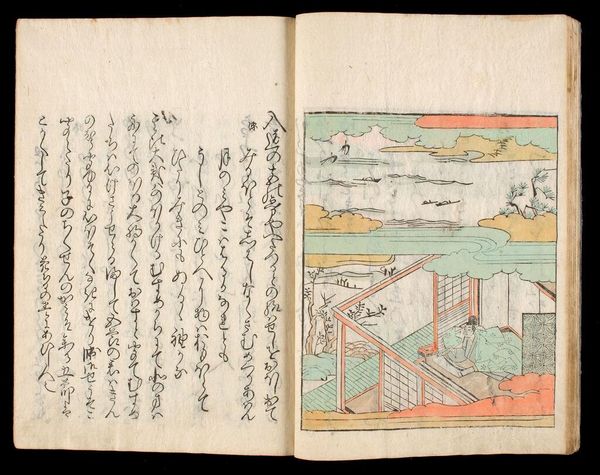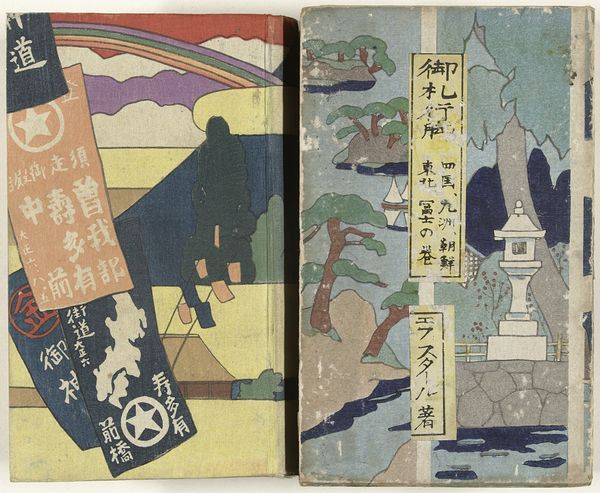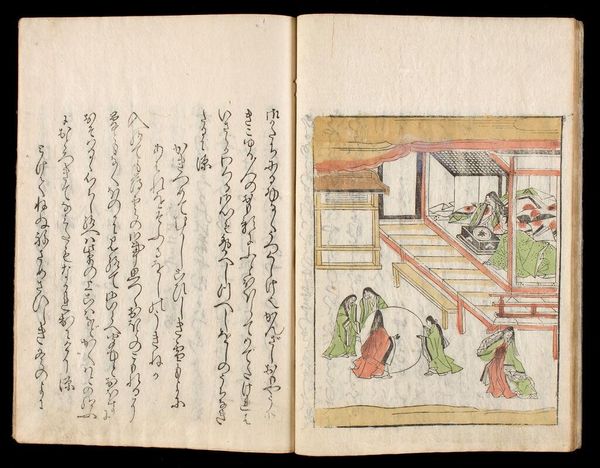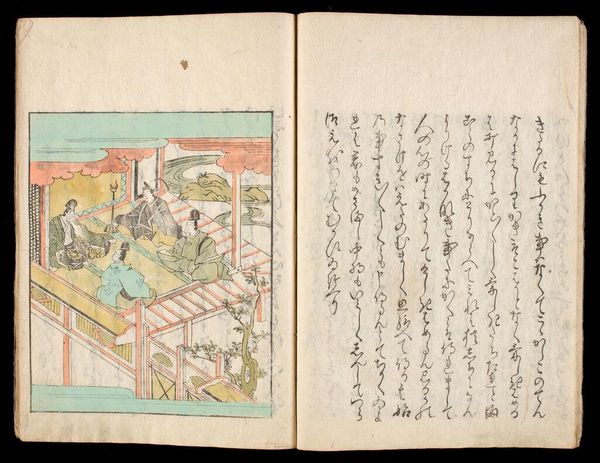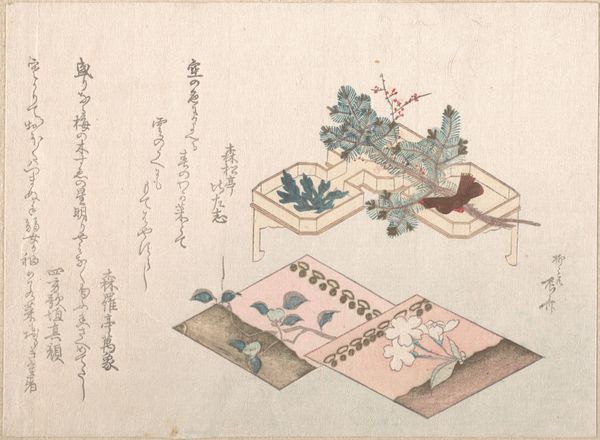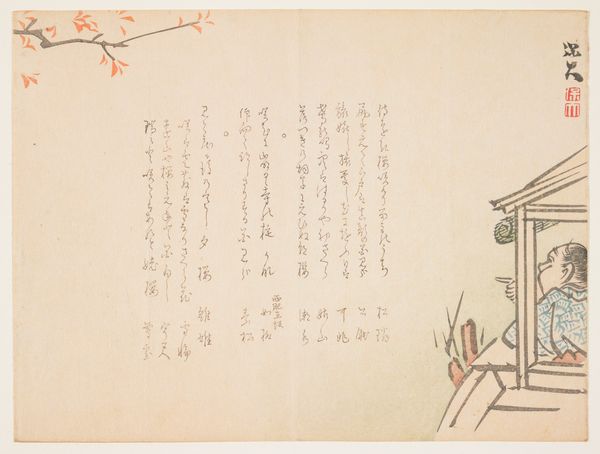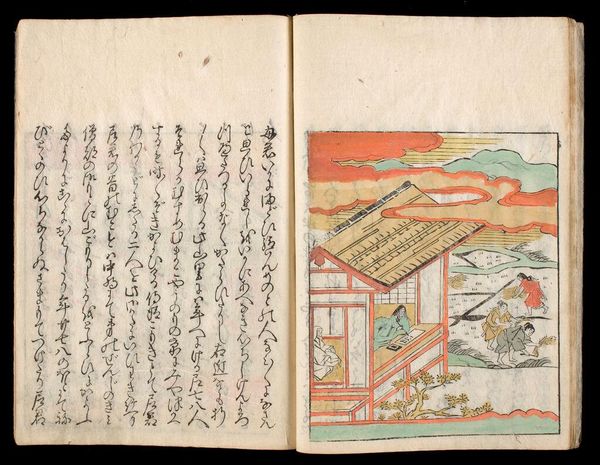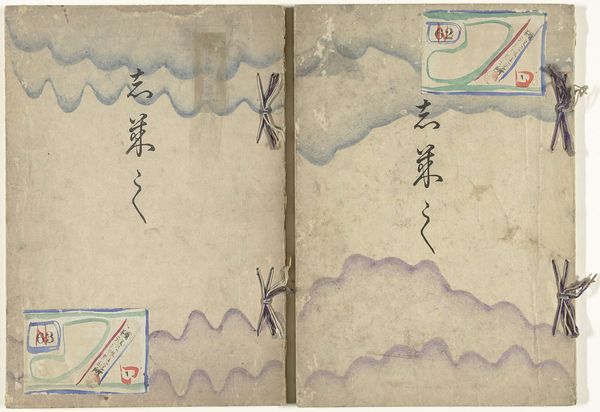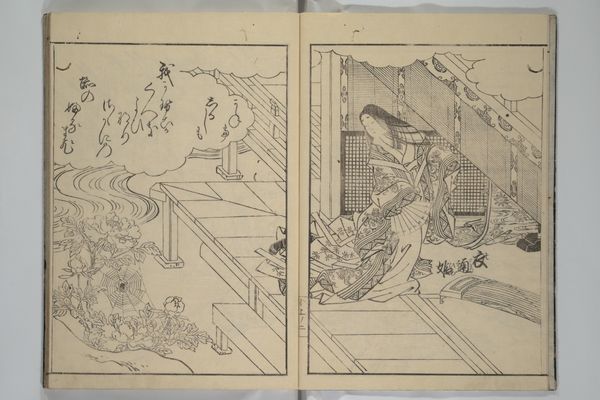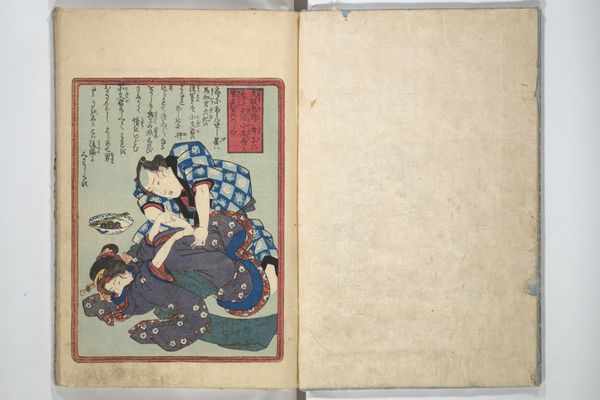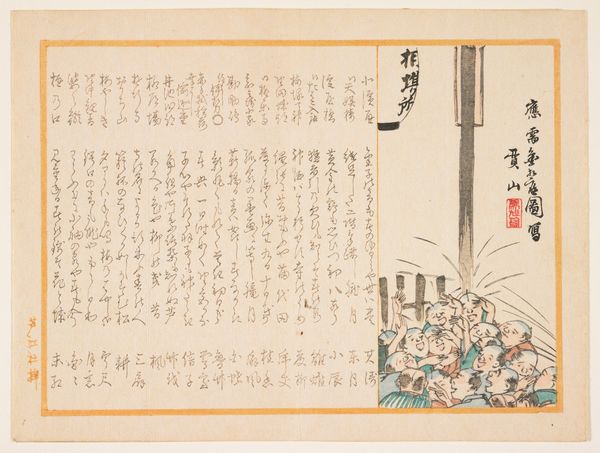
print, textile, woodblock-print
#
aged paper
#
toned paper
# print
#
book
#
asian-art
#
sketch book
#
landscape
#
textile
#
ukiyo-e
#
japan
#
personal sketchbook
#
coloured pencil
#
folk-art
#
woodblock-print
#
sketchbook drawing
#
watercolour bleed
#
watercolour illustration
#
genre-painting
#
sketchbook art
#
watercolor
Dimensions: 9 1/2 × 7 1/2 × 1/2 in. (24.1 × 19.1 × 1.3 cm) (each)9 1/2 × 7 1/2 × 1 1/2 in. (24.1 × 19.1 × 3.8 cm) (three stacked)
Copyright: Public Domain
Editor: Here we have Koikawa Shozan’s "Flowers," a woodblock print from around 1861-1863. The soft, aged paper and delicate lines give it such an intimate feeling. What stands out to you? Curator: What I notice immediately is the relationship between text and image, and how that relationship is *made*. Think about the production of this piece. It's a print from a book - accessible, replicable. This immediately breaks down hierarchies around who consumes art and how it’s disseminated. Notice how the image provides an accessible view to the domesticity while the script beside it invites higher, sophisticated interpretations of culture. Editor: So, it’s not just the image itself, but also its mode of production and consumption that is crucial here? How does this connect to the ukiyo-e tradition it’s linked to? Curator: Exactly. Ukiyo-e, at its heart, was about mass production and consumption. Woodblock printing democratized art. Consider also the labor involved, not just Shozan's design, but the carvers, printers, and distributors, all contributing to the final product and the economy built on these works. Does that challenge your understanding of who makes “art?" Editor: Definitely. I was initially focused on the aesthetic quality, but thinking about it as a product of a whole system of labor and consumption opens up a completely new perspective. Thank you! Curator: And hopefully raises more questions than answers, doesn’t it? These objects invite inquiry into their full journey.
Comments
minneapolisinstituteofart about 2 years ago
⋮
The Tale of Genji, arguably the most famous Japanese novel, was written by Murasaki Shikibu, an early eleventh century noblewoman. The story centers around Hikaru Genji, the handsome son of an Emperor, and his romantic life. The tale’s implicit eroticism provided fertile ground for explicitly erotic adaptaions. In the late Edo period, writer Ryūtei Tanehiko wrote a parody of the tale titled A Fraudulent Murasaki’s Rustic Genji (1829), which set off a string of Genji-inspired erotic illustrated books. Kagetsu Genji is an example of an erotic adaptation of the Tale of Genji. The first volume covers the plot in chapters 1 (“The Paulownia Pavilion”) to 11 (“Falling Flowers”); the second from chapters 12 (“Suma”) to 23 (The Warbler’s First Song”); and the third from chapters 24 (Butterflies) to 35 (“Spring Shoots II”). The remaining 18 chapters are not included. Each volume includes 12 pages of illustrations depicting men and women in various positions of sexual intercourse, framed by red and purple. A shell-shaped cartouche at the top right of each page contains a poem from Genji, connecting the erotic rendering back to the original text. Following the illustrations, 18 to 22 pages of text follow. Readers were thus visually and intellectually stimulated.
Join the conversation
Join millions of artists and users on Artera today and experience the ultimate creative platform.
